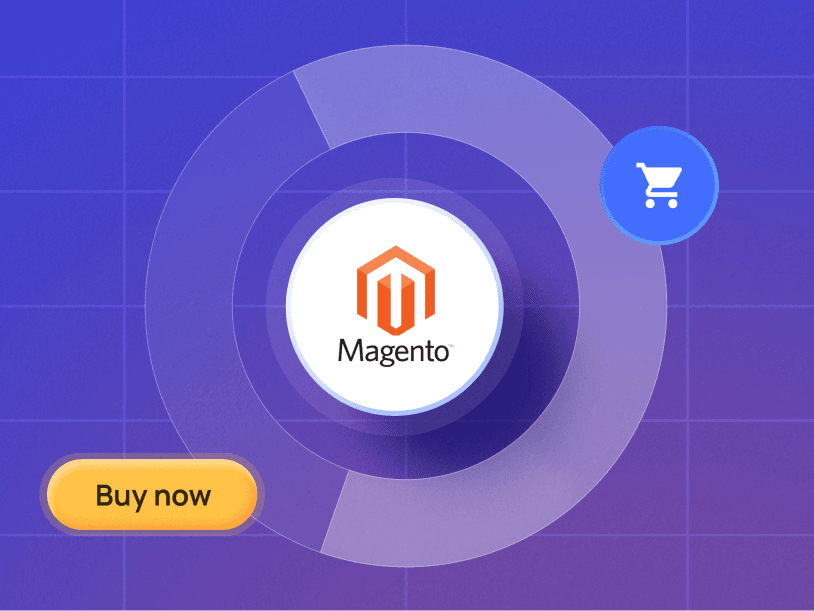Magento Open Source vs Adobe Commerce Key Differences
.png&w=3840&q=75)
Is Magento Open Source and Adobe Commerce the same?
There has been much confusion and miscommunication around Magento Open Source vs Adobe Commerce. Since Adobe acquired Magento in 2017, there has been ongoing confusion in the ecommerce community surrounding the distinctions between Magento and Adobe Commerce.
While Adobe renamed Magento Commerce to Adobe Commerce in April 2021.
To put it plainly, Magento Commerce is a descendant of Adobe Commerce. It's not a replacement because it runs in the same codebase as the former.
There are three versions of Magento/Adobe Commerce. Let's explore them!
Magento Open Source vs Adobe Commerce: Key Differences
- Magento Open Source: The Foundation
What is it?
A community edition (CE) e-commerce platform, Magento Open Source, helps you to create an online store with minimum investment. It serves as the backbone of approximately 80% of Magento websites.
Features:
- Product management
- Global selling capabilities
- Mobile responsiveness
- Payment handling
- Basic ecommerce functionalities
Considerations:
Magento Open Source suits small businesses or those starting with a straightforward online presence.
In the past, when people were okay with basic online stores and only needed a few fancy features, this ecommerce platform was perfect for small businesses.
Furthermore, it also lets you add extra features using third-party tools like extensions from Adobe Commerce Marketplace. However, because it's free, you have to handle everything yourself, like the space on the internet (hosting) where your store will be and the technical side of things.
Here are the three things you will be responsible for:
- Hosting Management: You are responsible for sourcing and managing your hosting with a free platform.
This means finding a suitable web hosting provider, deciding on server specifications, and ensuring your website has the necessary resources to run smoothly.
So, managing hosting independently can require technical knowledge and troubleshooting skills.
- Technical Configuration and Maintenance: While Magento Open Source provides a robust foundation for eCommerce, handling the technical configuration and maintenance tasks falls on your shoulders. This involves updating software, managing security measures, and resolving technical issues.
Users must possess or acquire the technological know-how to manage these aspects.
- Customization and Integration: When you opt for a free platform, customizing and integrating with third-party tools or extensions becomes your responsibility.
Unlike premium versions that may come with built-in integrations or dedicated marketplaces, you'll need to identify, install, and configure third-party extensions from the Adobe Commerce Marketplace or other sources.
This demands hands-on involvement in tailoring your eCommerce store to meet your needs.
2. Adobe Commerce: Elevating the Experience
What is it?
Formerly known as Magento Commerce, Adobe Commerce steps up as the premium version of the toolkit. It's designed for those seeking a more sophisticated and feature-rich ecommerce experience.
Features:
- Intelligent search capabilities
- Product recommendations
- Advanced product organization
- Tools for business customers
- Single admin panel to manage multiple stores
- Advanced catalog management
- B2B Specific Magento Extensions
- Robust marketing features
Considerations:
Adobe Commerce is ideal for larger businesses with a more intricate online presence.
It streamlines everything from customer transactions to store aesthetics and marketing. While it comes at a cost, the convenience and features of the cloud version make it a worthy investment.
The best part is that Adobe Commerce handles everything in one place - from people buying stuff to how your store looks and advertises.
Adobe Commerce is the perfect option for large enterprises that want to do more complicated things online and offer a fantastic experience to customers.
3. Adobe Commerce Cloud: Unleashing Superpowers
What is it?
Adobe Commerce Cloud is the version of Adobe Commerce that lives in the cloud instead of on your computer or server. It's super flexible and can handle even more complicated stuff. It has all the cool features of Adobe Commerce, plus it comes with extra powers, like special tools for developers to work on the store without messing it up for customers.
Features:
- All features of Adobe Commerce
- Cloud-based flexibility
- Advanced development tools
- Smooth and rapid store operations
Considerations:
Adobe Commerce Cloud is the superhero version, residing in the cloud for enhanced flexibility. It's suitable for those who want the utmost capabilities, with a super-organized team managing every online store aspect.
Summing it up: Choosing Your Ecommerce Adventure.
In summary, your choice depends on the kind of online store you envision:
Magento Open Source: If you want a basic online store with the freedom to handle many aspects independently.
Adobe Commerce: For those willing to invest in a premium experience, accessing advanced features and comprehensive support.
Adobe Commerce Cloud: The superhero version in the cloud, offering unparalleled flexibility and capabilities for a truly dynamic online store.
Each version has its strengths, so you've got to make the right choice depending on the scale and complexity of your e-commerce store.

